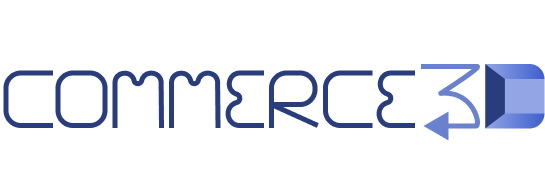Product Photography Props: How Props Help CGI Product Photography
Learn how product photography props can help you create stunning photos for your online product listings.
January 14, 2024
Content Writer
Sanketee Kher

Think about it — when you shop online, which listings capture your attention instantly? Low-quality product pictures from front and back or images with beautifully detailed real-life backgrounds? For the majority, it’s the latter.
That’s the power of adding the right props to your product photos. They add context, evoke emotions, and create a narrative around the item, enhancing customer appeal.
In short, well-placed product photography props can turn a product photo into a persuasive story, nudging potential buyers to tap “Add to Cart.”
However, acquiring real-life props for all your products and photographing them with each combination individually is a long-drawn and expensive process.
Solution? Hyper-realistic CGI props.
All you need are the right CGI tool and creative instincts, and you can create digital props that look indistinguishable from real-life objects.
So, today’s blog discusses the numerous benefits of hyper-realistic props in CGI product photography and the best ways to magnify your online store’s impact.
That’s the power of adding the right props to your product photos. They add context, evoke emotions, and create a narrative around the item, enhancing customer appeal.
In short, well-placed product photography props can turn a product photo into a persuasive story, nudging potential buyers to tap “Add to Cart.”
However, acquiring real-life props for all your products and photographing them with each combination individually is a long-drawn and expensive process.
Solution? Hyper-realistic CGI props.
All you need are the right CGI tool and creative instincts, and you can create digital props that look indistinguishable from real-life objects.
So, today’s blog discusses the numerous benefits of hyper-realistic props in CGI product photography and the best ways to magnify your online store’s impact.
Table of Contents:
Table of Contents:
What are hyper-realistic props in CGI product photography?
Hyper-realistic CGI props are computer-generated representations of objects or items in a digital environment closely or completely resembling their real-world counterparts. They are used to accentuate a product’s placement in the CGI photograph and give the customer an idea of how they would look in real-life scenarios.
You need advanced CGI techniques to create extremely intricate details and texture of the product photography props. The more indistinguishable they are from the physical objects, the more realistic your product photo will be on screen.
You need advanced CGI techniques to create extremely intricate details and texture of the product photography props. The more indistinguishable they are from the physical objects, the more realistic your product photo will be on screen.
Benefits of using hyper-realistic props in CGI photography
From turning boring product images into visual stories to saving your design and marketing team’s time and effort, using CGI props offers strategic benefits. Here are some notable ones:
Better customizations
With traditional props, you have limited flexibility to adjust them to your product and brand. They are what they are. You can place them differently for each frame, yes. But they can’t be modified enough to match the intricacies of your brand.
The primary advantage you get from CGI props is designing customization. You can tailor each prop to their finest detail and align them with your brand image on the fly. Since they’re digital, you can change their colors, textures, and sizes to match your product’s vibe. Such easy adjustments make your online store and listings look more personalized and set it apart from the competitors.
You can experiment with various settings without going through individual photography sessions. For example, the CGI shelf you used to showcase your newly launched microwave can be resized, recolored, or retextured in mere minutes to suit its next updated version.
The primary advantage you get from CGI props is designing customization. You can tailor each prop to their finest detail and align them with your brand image on the fly. Since they’re digital, you can change their colors, textures, and sizes to match your product’s vibe. Such easy adjustments make your online store and listings look more personalized and set it apart from the competitors.
You can experiment with various settings without going through individual photography sessions. For example, the CGI shelf you used to showcase your newly launched microwave can be resized, recolored, or retextured in mere minutes to suit its next updated version.
Compelling storytelling
One of the biggest issues customers face while shopping online is the lack of hands-on experience. They can’t know how the product would look in real-life settings — if you can’t solve this problem through your product photos, you may just lose potential sales.
Hyper-realistic product photography props add context to your images. They offer the customer a narrative around the product and help them relate to its applications.
People connect over stories. With the right props, you can leverage this inherently humane trait and persuade customers through visual storytelling. For example, let’s say that you sell bed frames. You can create realistic settings of a well-decorated room through CGI props and place the product there. It creates a narrative in your buyer’s head that their room will look this nice with your bed frame.
Hyper-realistic product photography props add context to your images. They offer the customer a narrative around the product and help them relate to its applications.
People connect over stories. With the right props, you can leverage this inherently humane trait and persuade customers through visual storytelling. For example, let’s say that you sell bed frames. You can create realistic settings of a well-decorated room through CGI props and place the product there. It creates a narrative in your buyer’s head that their room will look this nice with your bed frame.
Cost-efficient
Photoshoots are a hefty investment. You need high-quality shooting equipment and arrange the right props for each product. You may also need to re-shoot, which adds further financial burden. If you don’t have an in-house photography team or the right expertise in the field, outsourcing them may cost you even more.
CGI props can help you avoid such a lengthy and expensive shooting process. You can create virtual environments and generate multiple props to suit each product. You can change their placements and update the product photo whenever you need without a reshoot like below.
CGI props can help you avoid such a lengthy and expensive shooting process. You can create virtual environments and generate multiple props to suit each product. You can change their placements and update the product photo whenever you need without a reshoot like below.

Infinite reproducibility
You can reproduce your CGI props infinitely without compromising on their quality. Generate a batch of props in different colors and sizes. You can even change some of the props features as required.
This is especially helpful when you are expanding your product range. With bulk prop generation, you can maintain consistency in product photos across your store and all your marketing channels.
This is especially helpful when you are expanding your product range. With bulk prop generation, you can maintain consistency in product photos across your store and all your marketing channels.
Easier collaborations and revisions
You can share your digitally rendered props with your team and seek feedback. Your team can bring different perspectives into the prop’s design and placement, giving you time to revise and adjust before finalizing the product photo.
Best practices for using hyper-realistic props for CGI product photography
CGI props are much more time and cost-efficient than arranging traditional photography set-ups. However, digitally designing hyper-realistic props is also an art. You must know each prop’s relevance to the image and its purpose and a clear vision of how they would impact the audience’s perception.
Sounds complicated? If you follow these best practices, it doesn’t have to be:
Sounds complicated? If you follow these best practices, it doesn’t have to be:
Intentional prop selection
First and foremost, you must choose props that are contextually relevant to your product and brand. The wrong prop can confuse the buyer, proving detrimental to the product’s appeal. Remember, props are there to help accentuate its features and functionality, not diverting attention from it.
Take a cue from Eboost-
Take a cue from Eboost-

To advertise their Rescue BCAA+ product, which helps with body recovery, they included a fern as a prop in the picture. And this was no coincidence; ferns in photos often suggest peace and nature, which is a great fit for wellness and relaxation products. So, this photo gives a clear message of rest and recuperation to customers.
Another example could be a personal care brand selling a premium shaving kit, using props such as a plush bath towel, a high-quality shaving brush, a sleek razor stand, and a beautiful marble sink. Each of these props will highlight the luxury your product offers.
There are a few types of product photography props you can use, including:
Another example could be a personal care brand selling a premium shaving kit, using props such as a plush bath towel, a high-quality shaving brush, a sleek razor stand, and a beautiful marble sink. Each of these props will highlight the luxury your product offers.
There are a few types of product photography props you can use, including:
- Geometric risers to bring out depth in your product photography
- Botanic accents to add a touch of freshness and nature
- Relevant 3D props to give the customer a visual cue of what they can expect from your product

Another example how to use simple but on-brand and appropriate product photography props is displayed above. "Super Fuel" energy drink has blueberry and raspberry flavors, and the photo also has the two fruits as props. It lets customers know how the drink will taste.
Maintain prop proportion
Using oversized or undersized props can also distort the customer’s perception of your product. They can get confused about the product’s actual size — and that’s the last thing you want.
That’s why maintaining the proportions of props is another crucial part of creating hyper-realistic product representation. Remember, props should be in scale with the product to maintain a realistic perspective. They should give the customer a fair idea of the product’s dimensions.
That’s why maintaining the proportions of props is another crucial part of creating hyper-realistic product representation. Remember, props should be in scale with the product to maintain a realistic perspective. They should give the customer a fair idea of the product’s dimensions.

For example, the displayed product photo highlights the packaging dimensions of the "3D PREDICT" dental aligners.
The use of white and teal elements along with clear aligners against a neutral background emphasizes the product's clean, medical nature, while the arrangement of the items suggests a premium branding strategy.
The use of white and teal elements along with clear aligners against a neutral background emphasizes the product's clean, medical nature, while the arrangement of the items suggests a premium branding strategy.
Choose complementary and on-brand color schemes
Besides the purpose and size of your product photography props, their colors are equally important for the product photo’s impact. You don’t want to use colors that clash drastically with the product’s or the background’s color. It can create visual dissonance in your audience and even wash out your product.
The hues should complement or contrast the product to enhance its visual appeal.
The hues should complement or contrast the product to enhance its visual appeal.

For example, the above product photo showcases a can of "BREZ" drink on a gradient background that aligns with the brand's color schemes, emphasizing the product's modern branding and the iridescent colors that suggest its unique ingredients.
Select the right backdrop to match your product
Next, ensure the photo’s background fits the props and the product. The right background will complement your product and work cohesively with your props to create a captivating visual presentation.
When choosing a backdrop, select a product background color that aligns with your brand’s aesthetic. The backdrop should harmonize with your overall brand identity and the product itself. Select subtle and neutral colors. They won’t overshadow the product and guide the viewer’s attention towards it.
And don’t forget that white backdrops are a great neutral option as they work well with almost any product and keep the focus right where it should be.
When choosing a backdrop, select a product background color that aligns with your brand’s aesthetic. The backdrop should harmonize with your overall brand identity and the product itself. Select subtle and neutral colors. They won’t overshadow the product and guide the viewer’s attention towards it.
And don’t forget that white backdrops are a great neutral option as they work well with almost any product and keep the focus right where it should be.

For example, the above product photo features a collection of "Dr. Cuddles" pet care products arranged on colored geometric blocks, using a soft pastel color scheme to create a playful and inviting aesthetic.
Test and adapt
Once you have chosen props you are satisfied with, add them to your product photo and see which combinations align with your target demographics the most.
Analyze how the audience is responding to the images. For example, if you use Amazon A+ content for your product photography, you can access detailed insights into their performance. Examine these data and adjust your CGI prop selections and placements accordingly.
Analyze how the audience is responding to the images. For example, if you use Amazon A+ content for your product photography, you can access detailed insights into their performance. Examine these data and adjust your CGI prop selections and placements accordingly.
Get started with hyper-realistic CGI product photography props
When customers browse products, they’re not just looking for an item; they’re shopping for experiences, solutions, and a lifestyle. To accommodate this, hyper-realistic CGI props are one of the best elements you can use in your product photos.
Here is a quick rundown of the role of props in product photography:
With our expertise in designing the best props for product photography, no competitor will be a match for the realism and beauty of your product photos.
Want to unleash the power of hyper-realistic product photography props for your e-commerce store? Make an order and get your first two 3D product pictures for free!
Here is a quick rundown of the role of props in product photography:
- You don’t have to waste weeks on arranging the right props.
- If the result doesn’t look satisfactory, no need to reshoot either. You can easily edit or change placements whenever you want.
- Best part? With proper detailing, no one can tell your props apart from real-life objects.
With our expertise in designing the best props for product photography, no competitor will be a match for the realism and beauty of your product photos.
Want to unleash the power of hyper-realistic product photography props for your e-commerce store? Make an order and get your first two 3D product pictures for free!


